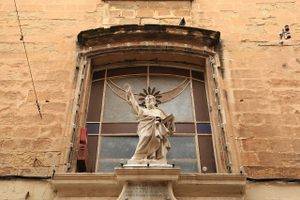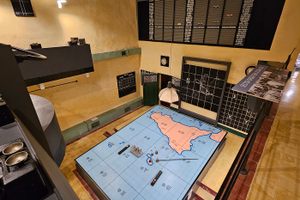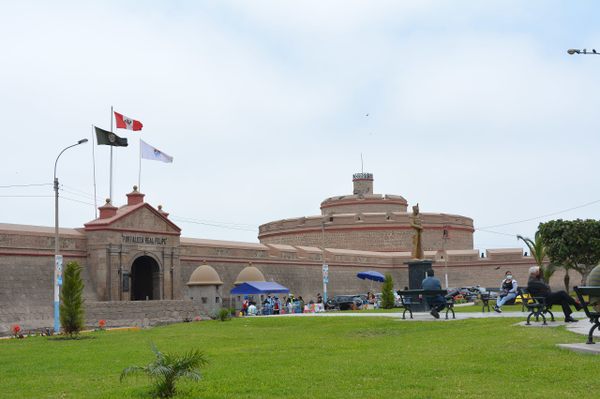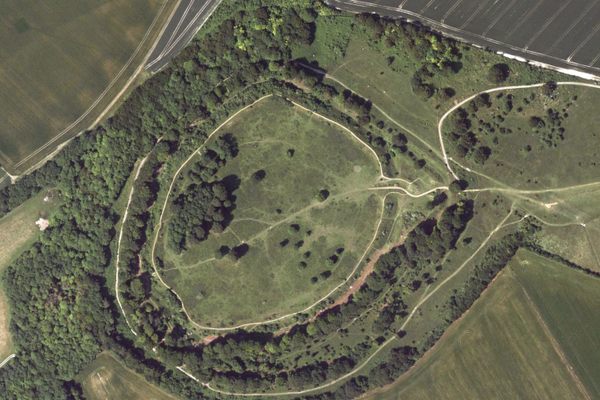About
One of Malta’s most well-known landmarks, Fort Saint Angelo, was fortified in 1530, when the Order of Saint John came to the island. The original structure, which was crumbling, was rebuilt and became the residence of the head of the Catholic military order, as well as the organization's headquarters.
The massive fort has several rooms that reflect its crucial role in Maltese history, especially during the Great Siege, which took place a few decades after its construction. But beneath the fort itself lies a prison which was greatly feared and housed many high-ranking offenders within the order. It was rediscovered by the British in 1913.
The guva, or oubliette, was chiseled out of stone underneath the fort and could only be accessed through a trapdoor in its ceiling. The oval-shaped prison is situated opposite the Chapel of Nativity. and was originally a water cistern. Soon, however, errant knights were locked up there to languish as punishment for various crimes. Shelves and niches were carved into the walls to hold candles or lamps.
One of the most notable prisoners who served some time in the guva was the infamous artist Caravaggio, who was confined there in the early 17th century before he escaped the fort and the island.
Scratched on the walls of this grim and often unnoticed oubliette are various designs and inscriptions, dating back to as early as 1532, almost immediately after the fort’s construction. A lot of the graffiti, which is written in different European languages including Latin, reflects the despair of those holed up in the underbelly of the vast fort.
A later inscription by a knight who was accused of stealing silver from the church and melting it down, reads:
"John James Sandilands // Imprisoned in this living grave // Where evil triumphs over good // To the satisfaction of my enemies // So much for friendship."
Sandilands was later executed for his crime.
Another prominent inscription features the shield of a French knight, whose family escutcheon is a swan beneath a chevron, with a right and left star respectively and a rose. The names of Italian knights Leonardv, Brvnv, and Annibale Parucci are still seen, with the year 1573 carved underneath the inscriptions from the Bible.
The guva was most likely a temporary prison, holding convicts for brief periods. Although the oubliette is not accessible, there is a monitor which shows the 360 degree interior, as well as photographs of the graffiti and its history.
Related Tags
Know Before You Go
The fort is perched at the top of the peninsula. Ideally, you should reach the fort on foot, as the street leading to it is a two way street and often a car has to give way to the other. Even though the oubliette cannot be accessed, there is a display room with photographs and a monitors which shows the interior.
Published
August 25, 2017
Sources
- https://www.facebook.com/CentralMediterraneanPenalHeritageProject
- https://www.facebook.com/FortStAngelo/photos/a.285639981529455.64448.263139627112824/696347553792027/
- http://www.orderofmalta-malta.org.mt/panoramas/fortstangelo/mainfortstangelo.htm
- https://books.google.com/books?id=aMrluNtN6nMC&pg=PT78&lpg=PT78&dq=fort+St+Angelo+oubliette&source=bl&ots=32GhewUZoH&sig=QBzk5lyJe7fMIxiAajpkoHQ03zY&hl=en&sa=X&ved=0ahUKEwjXztWdq_DVAhWj4IMKHYlJCuIQ6AEIXTAM#v=onepage&q=fort%20St%20Angelo%20oubliette&f=false
- http://www.visitmalta.com/en/info/fortstangelo
- https://books.google.com/books?id=_Rv7AAAAQBAJ&pg=PA70&lpg=PA70&dq=fort+St+Angelo+oubliette&source=bl&ots=LQKgxnItzj&sig=j2u4ONugkcBsRB_JaEojzNsUjBQ&hl=en&sa=X&ved=0ahUKEwi3m6abrPDVAhUl_4MKHSuNBD0Q6AEIYDAN#v=onepage&q=oubliette&f=false
- http://www.azure.com.mt/words-from-henri/malta-in-literature-through-history.html
- http://www.orderofmalta-malta.org.mt/publications/Caravaggio-%20from%20persona%20virtuosissima.pdf
- http://www.orderofmalta-malta.org.mt/panoramas/fortstangelo/mainfortstangelo.htm#Bottom
- http://antikmalta.com/2016/04/12/fort-saint-angelo/
- https://www.timesofmalta.com/articles/view/20150111/life-features/Thefts-by-knights-from-churches.551626
- https://www.orderofmalta.int/history/orders-of-st-john/
- http://www.independent.com.mt/articles/2010-09-05/news/the-vision-for-a-restored-fort-st-angelo-279791/


































